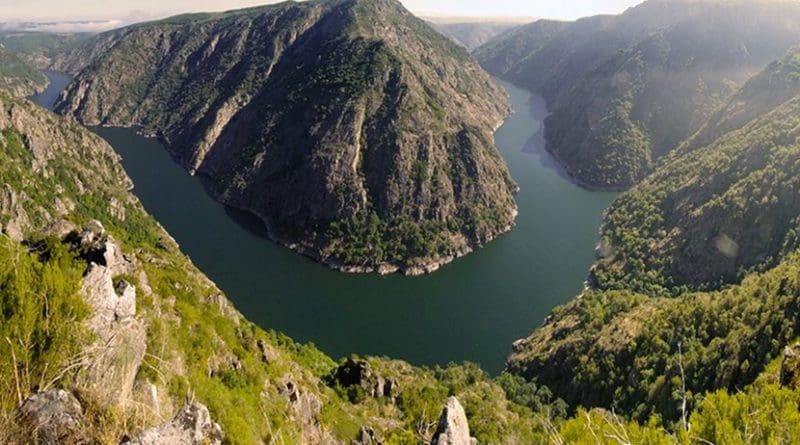Spain’s Ribeira Sacra New Candidate For UNESCO’s World Heritage Site
The cultural landscape of the Ribeira Sacra (Ourense) is the latest candidature chosen by the Historic Heritage Council to be added to the list of UNESCO World Heritage Sites.
The decision was taken on Friday at the Santo Estevo Parador, a luxury State-owned hotel in Ourense, at the meeting of the Historic Heritage Council – chaired by the Director-General for Fine Arts, Román Fernández-Baca – with representatives of all regional governments.
The Spanish candidature will be presented to the international body in February 2020, with the assessment on it inclusion to be made in 2021.
The Ribeira Sacra is the most westerly symbolic landscape of continental Europe. It lies in the Sil and del Miño valleys, and is home to a collection of hermitages, monasteries, churches, chapels and crossing points which, due to their variety and profusion, form a cultural space unique in the world, providing an example of primitive lifestyle that existed towards the end of the fourth century.
Glass blowing and the Spanish knot, proposed for Intangible Cultural Heritage
The Historic Heritage Council also agreed to apply for ‘glass blowing’ and the ‘Spanish knot’ to be declared as Representative Manifestations of Intangible Cultural Heritage in Spain. Two historic producers of blown glass representing this technique are the Centro Nacional del Vidrio de la Granja (La Granja National Glass Center) in Segovia and Los Vidrios Gordiola in Majorca, although individual examples exist throughout the country in small artisan workshops, often associated with museums, which are trying to revive and showcase these production methods that were so characteristic of centers that no longer exist.
The report highlights the fact that these glass blowing centers have been producing continuously over the last three centuries. It also emphasized the variety of their products, which still include traditional designs alongside new designs of all shapes and sizes.
The Spanish knot is a traditional textile method emblematic of the country, which has been used on the Iberian Peninsula since the 16th Century. Its origins can be traced back to the Spanish knotted-pile carpets although today there are very few craftsmen and women that command this technique. The Royal Tapestry Factory in Madrid is the only place that can provide training in this technique.
In conjunction with Mexico, the Historic Heritage Council has also announced the presentation of the international candidature for the ‘Traditional skills for producing “Talavera” pottery in Puebla (Mexico) and in Talavera de la Reina and El Puente del Arzobispo (Spain)’, which will be considered in December at the next meeting of the UNESCO Committee for Intangible Cultural Heritage to be held in Bogotá (Colombia).
In relation to underwater heritage, in June UNESCO will decide if the ‘Nuestra Señora de la Mercedes project is a good practice in terms of underwater cultural heritage. This is a scientific response in very deep water as opposed to the plundering of Underwater Heritage’, and takes into account the archaeological investigation campaigns carried out by the Ministry of Culture and Sport since 2015.
Finally the Council was familiarized with the details of the International Congress entitled ‘The Spanish Armada of 1588 and the English “Counter Armada” of 1589’, which will be held between 23 and 26 April at the site of ARQUA, the National Museum of Underwater Archaeology in Cartagena, Spain.

